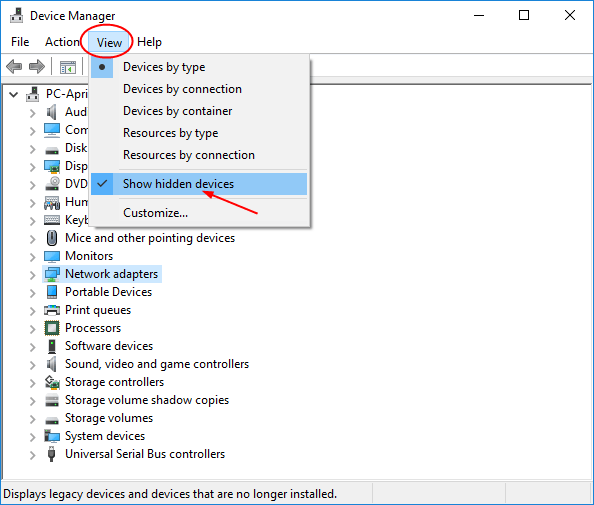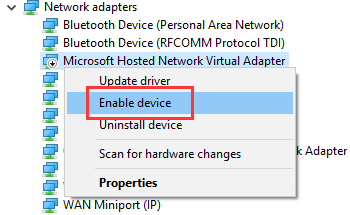

This configuration requires significant overhead, excluding any protocol-related issues.

Additionally, broadcast messages must be handled by each adapter because both are listening on the same network. Therefore, both adapters cannot be transmitting at the same time and must wait if another device on the network is transmitting. However, by definition, only one adapter may communicate on the network at a time in the Ethernet network topology.

In this scenario, you may expect the two adapters on the same physical network and protocol subnet to perform load balancing. The adapter addresses on the same subnet are 192.168.0.1 and 192.168.0.2.Ī client on the network uses the address 192.168.0.119. TCP/IP is installed as the network protocol. Two network adapters are connected to the same physical network or hub.
#START MICROSOFT HOSTED NETWORK ADAPTER WINDOWS#
You have a working computer that has Windows installed. This article describes the expected behavior of this kind of nonstandard configuration. If you configure a Windows-based computer that has more than one network adapter on the same physical network and protocol subnet, you may experience unexpected results. Windows Server 2008 Enterprise Windows Server 2008 Datacenter Windows Server 2008 R2 Enterprise Windows Server 2008 R2 Datacenter Windows Server 2012 Standard Windows Server 2012 Standard Windows Server 2012 Datacenter Windows Server 2012 Datacenter More.


 0 kommentar(er)
0 kommentar(er)
